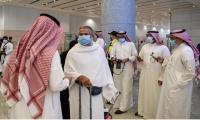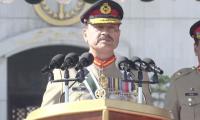The Punjab government has presented its 10th consecutive budget under Chief Minister Shahbaz Sharif. The approach adopted by the decade-long leadership of Shahbaz Sharif has been reflected in the budget priorities.
You may have seen full-page advertisements in almost all newspapers about a “historic budget” introduced by the Punjab government. This is one of the things that our governments are good at: advertisements. What governments do not tell us about are the achievements as against the promises made in previous budgets. Governments tell us that they have allocated a ‘historic’ amount of funds to a particular sector. But they usually fall short of telling us how much have they have actually spent on that sector in the outgoing year?
In all successive budgets, the government increased the share of development funds. With every budget, the government celebrated it as a “historic” achievement – which, in a way, it is. The development allocation has climbed up from Rs193.5 billion in FY 2010-11 to Rs635 billion in FY 2017-18. But how much of these “historic” allocations have actually materialised?
The financial volume allocated in FY 2010-11 actually materialised, with a four-year lag in 2013-14. The pace of actual development is much lower than the increase in allocations. In FY 2011-12, only 67 percent of development allocations were actually utilised. This dropped to 58 percent of development allocations in FY 2012-13 and improved to 79 percent in FY 2014-15.
An accumulated actualisation of developments funds from FY 2011-12 to FY 2014-15 stands at 68 percent of allocations. Over the span of four years, the government had promised allocations in the budget. However, it failed to either release or use the required funds. This amount is little more than the total development budget for FY 2014-15.
This may lead many to perceive that spending may have been reduced in all functional areas of allocations. That’s not the case. Some functional areas even used much more than what they were allocated and others used much less than what was allocated to them.
Over the last four years, Rs178 billion has been used in community development – a function which includes largely urban planning and urban services. This amount is nearly 80 percent more than this sector was allocated in these years. In all these years, Rs25 billion has been used for tertiary education affairs and services. On the other hand, spending on secondary education stands at Rs43 billion against Rs100 billion allocations. Surprisingly, just 15 percent of the allocated funds were spent on primary education. This translates into roughly Rs0.789 billion out of the funds worth Rs5.3 billion allocated to this sector over the last four years. Spending in these education areas has stood at approximately Rs70 billion over these four years. Meanwhile, spending on community development during this period amounted to Rs 178 billion. Rs47 billion was utilised on hospital services as compared to the allocation of Rs75 billion.
Water supply, like other amenities, experienced variations in its actual spending during these years. Rs34.6 billion of the Rs53billion allocated was utilised. The spending on the agriculture, food, irrigation, forestry and fishing sectors in the corresponding period amounted to Rs33.3 billion against the allocation of Rs115.2billion.
The construction and transport sectors have taken the largest share of the pie. Rs190 billion – which makes up just half of the allocated funds – has been spent on these sectors. These areas were allocated Rs327 billion over the last four years. To put things into perspective, the construction and transport sectors used (Rs190 billion) a little more than the combined amount (Rs185 billion) allocated to boost the education sectors, hospital services, water supply and agriculture and fishing. Environmental protection was allocated Rs970 million. However, only Rs161.6 million was used to protect the environment over the last four years – which is just 17 percent of the allocations.
Making large allocations and spending around half – or, in many cases, even less – of the funds leaves us with a few questions: Are allocations intentionally kept high as a cosmetic measure to please the people? Do we still lack the key competencies to make reasonable and reliable estimates even though we have been carrying out budgeting exercises for years? Are our institutions not competent enough to speed up development work?
With a decade under the continued leadership of one man, why haven’t we been able to do away with these gaps in allocations and actual spending?
Politicians have successfully influenced our minds with big announcements and advertisements. We only show an interest in the budget as far as ‘salary raises’ and ‘taxes’ are concerned. Without doubting the importance of these two factors, we also need to keep track of all other areas. What are we being promised and what is ultimately being delivered? If we continue to form our opinions based on what is promised and advertised, instead of what has been achieved, we may never be able to hold politicians accountable.
The writer is an engineer.
Email: ymcheema@gmail.com
Twitter: @Cheemz123
People stand in line up as election officials check their ballot papers during voting general election at a polling...
Women show their voter identity cards as they stand in a queue before casting their votes in Agartala. — PTIThe 18th...
Former prime minister Imran Khan. — Instagram/ imrankhan.ptiAn old saying has it that “when you dance with the...
Kashmiris in Indian illegally occupied Kashmir protesting against the Indian occupation as the forces of India looked...
A representational image showing residents walking at a wholesale market in Karachi. — AFP/FileOnce again there is...
A representational image showing late Pakistani human rights activist and Supreme Court lawyer Asma Jahangir. —...







